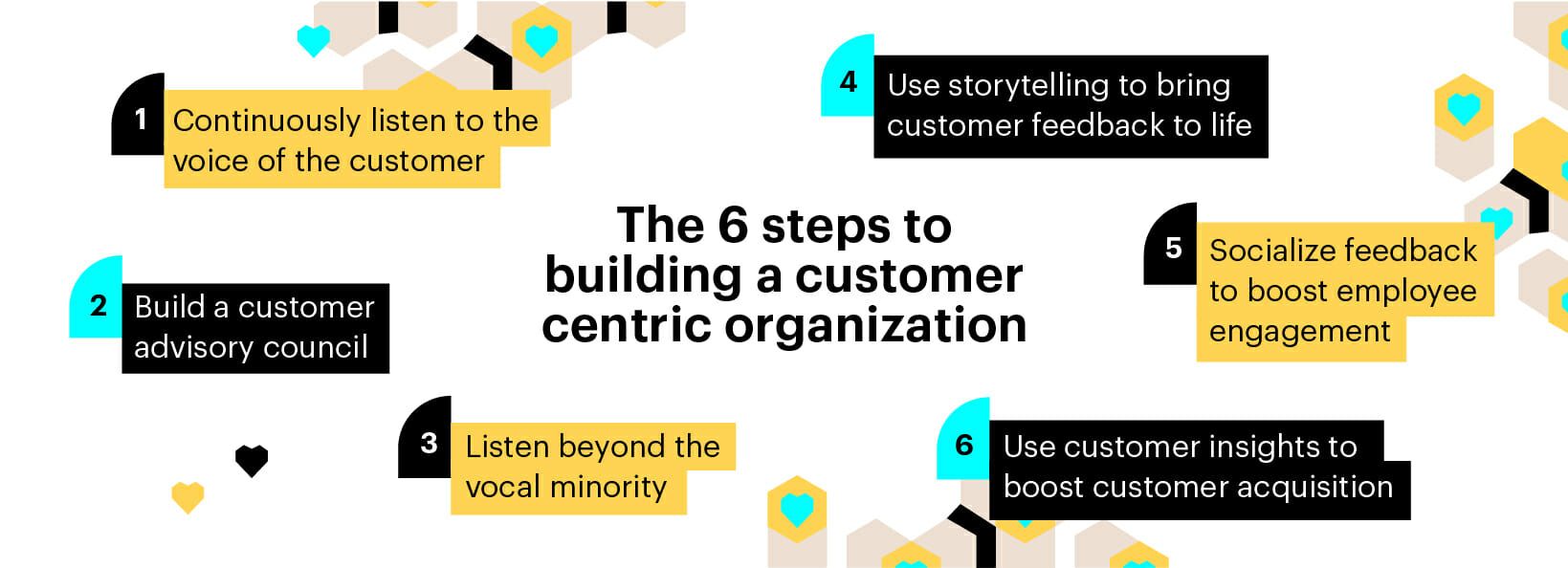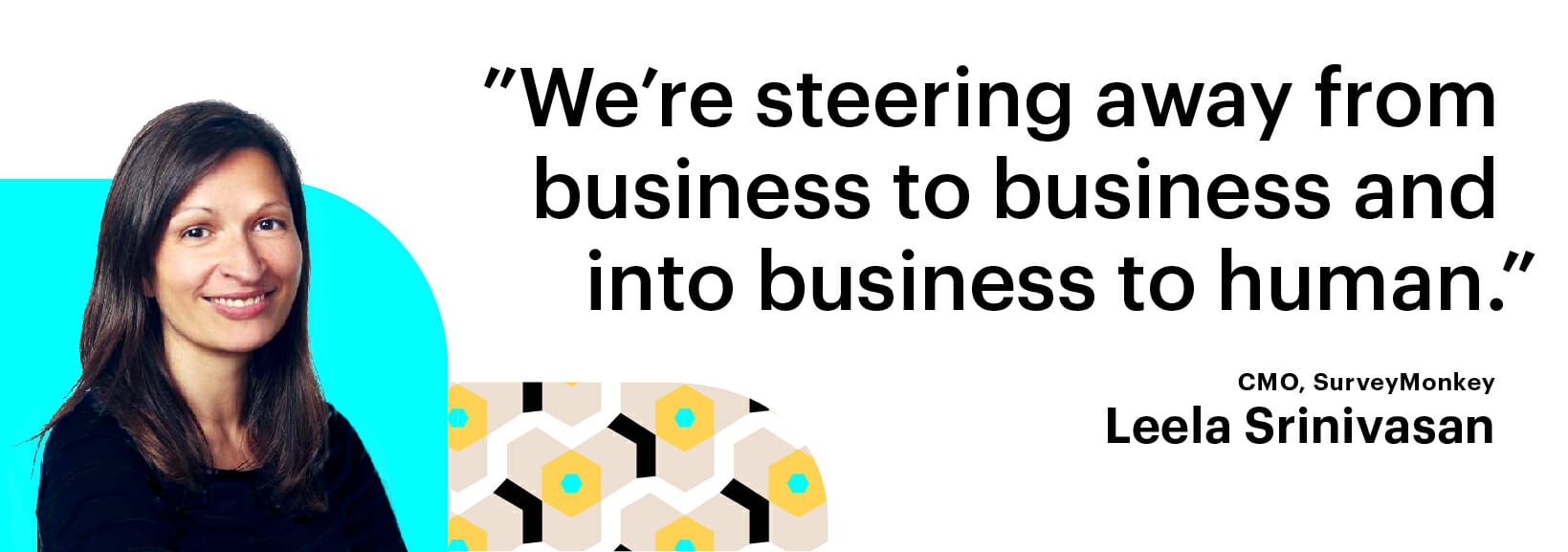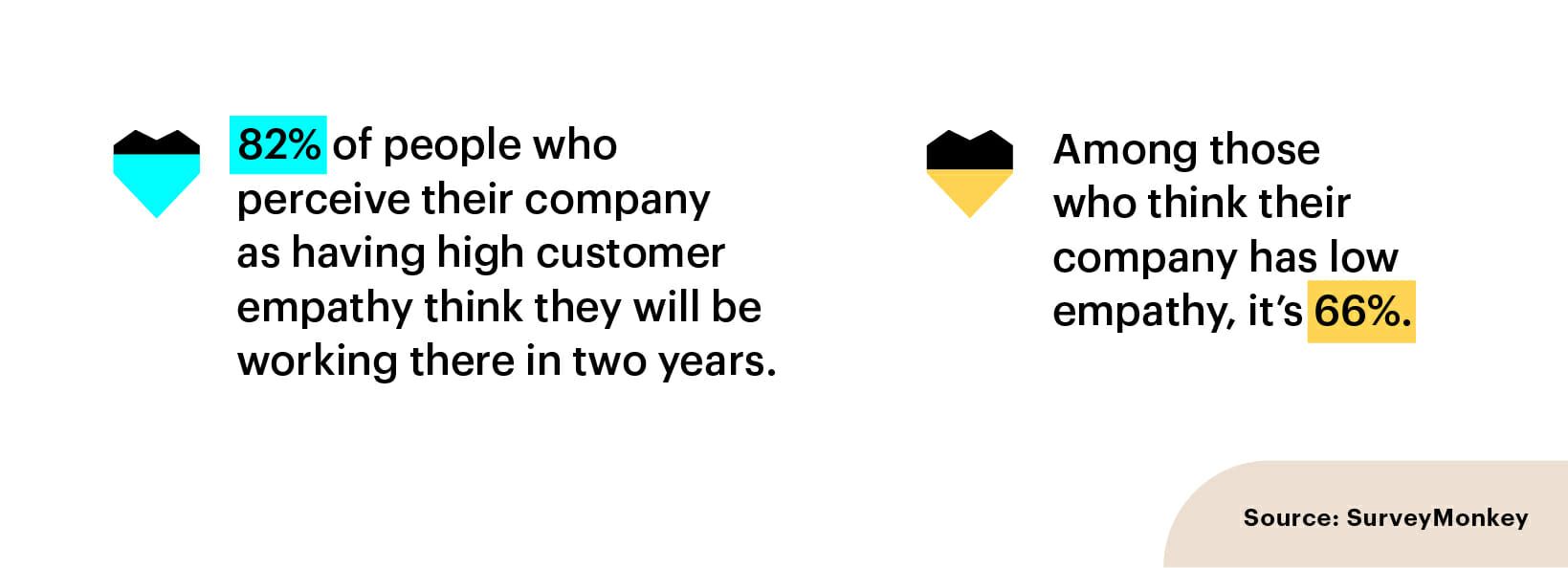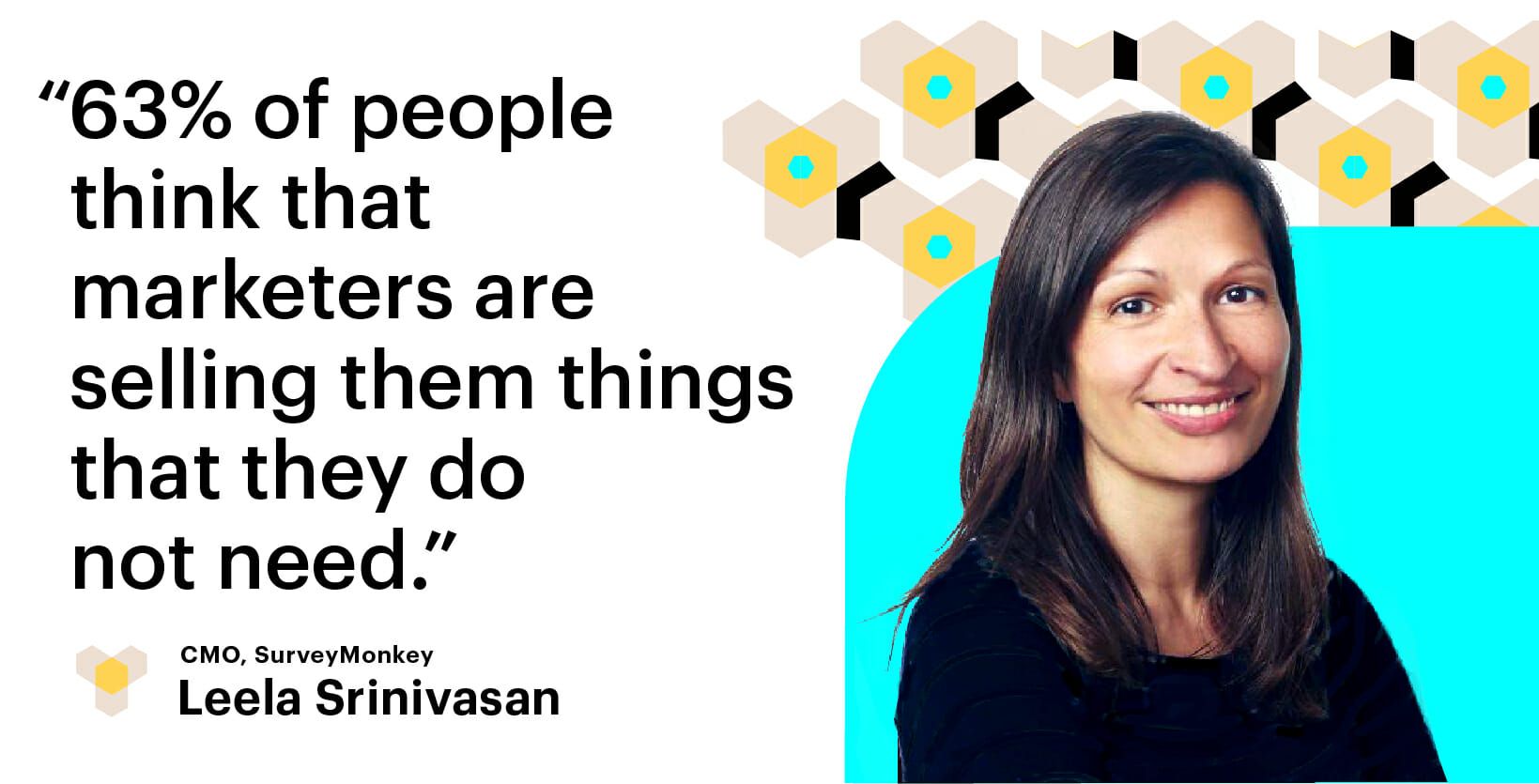
The art of being truly customer centric: 6 lessons from SurveyMonkey’s CMO
While it may be easy to grasp the concept of customer centric marketing, especially in an era when customers hold increasing power, it is damn hard to live, breathe and consistently measure its impact across your business.
Being “customer centric”, moreover, can too often be a phrase more than a philosophy, where the necessary insights about the customer don’t get fully baked into the marketing process.

It’s little wonder that the CMO Council reports that only 14% of marketers say that customer centricity is a hallmark of the companies they work for and fewer still – just 11% – believe their customers would agree with that characterization.
Leela Srinivasan, CMO at SurveyMonkey, is on a mission to change this. At companies like LinkedIn, Lever and now SurveyMonkey, she’s woven customer centricity deep into the fabric of the business – whether that’s in the process of product development, the company culture or how teams work day to day. Leela knows that slapping “customer centric” in your mission statement is rarely enough.
What follows are examples of how Leela has implemented specific tactics to ingrain a customer-centric mindset successfully across the whole organization. You can listen to our full discussion above, or dive deeper into the lessons below.
This is episode one of Scale, a brand new podcast series on moving from startup to scale up. If you enjoy the conversation and don’t want to miss the rest of the series, just hit subscribe on iTunes, stream on Spotify, Stitcher, or grab the RSS feed in your player of choice.

6 ways to create a customer-centric culture
1. Listen to the voice of the customer
Former General Electric CEO Jack Welch was famously obsessed with customer feedback. In fact, Welch believed so strongly in listening to the voice of GE’s customers that he once quipped:
“There are only two sources of competitive advantage: The ability to learn more about our customers faster than the competition, and the ability to turn that learning into action faster than the competition.”
Leela takes a similar tack, and believes customer feedback is the number one advantage you have to stay ahead of the competition. As she puts it herself, if you’re not listening to your customers, your competitors are.
Still, Leela says marketers today are out of touch with the needs of the people they’re selling to.
“At SurveyMonkey, we’re quite fond of research as you can imagine. We ran some research last year and found that 63% of people think that marketers are selling them things that they do not need. That tells me that we as a marketing profession are not doing a good enough job of listening, of really understanding the pain points, the challenges, the opportunities for us to add value to our customers.”
Listening to customers is an inherent part of being customer centric, so where do you start? Thankfully, this brings us nicely onto our next point…
2. Build a customer advisory council within your company
In every meeting Jeff Bezos attends, one chair is left empty.
The empty chair represents the customer and the idea is to remind his team that while customers can’t speak at the meeting, the company still has to prioritize them. It sounds cheesy, but it is a visually compelling way to remind themselves of what the customer would think.
Over the course of her career, Leela has achieved similar results by giving customers not just one, but dozen of seats at the table. Through her customer advisory councils, she’s found a way to source feedback from people who have already purchased the product, or better yet, are thinking about doing so in the future.
Leela explains is like this:
“The exact composition and purpose of the councils vary from company to company depending on what our biggest needs were. But something that was common across all of those was hand picking the right 10 to 15 people to work really closely with. And the purpose of working with them closely was to really listen to that feedback, to make sure that we had an active ear to folks that we thought were likely to give us constructive feedback and were the types of organization that we were looking to double down in terms of building more relationships with.”
3. Listen beyond the vocal minority

Here’s a crazy stat for you: Most brands hear from just one percent of their customers. This is worrying for all sorts of reasons, but a primary one is that listening to only that one percent can be very, very dangerous. To get truly comprehensive feedback that represents the views of your overall userbase, you want to hear old customers, new customers, free customers, VIP customers and everyone in between.
As Leela explained:
“You have to be careful not to oversteer into a handful of customers, especially for the customers that are closest to you. You’re basically preaching to the choir and you’re getting a very biased sample back.
“What I’ve always tried to do, for example when I’m recruiting for a customer advisory council, is to think very carefully about the company’s objectives. What is the ideal customer profile that we’re pursuing and how do we make sure that we have enough of those folks on the council to help drive the discussion?”
4. Use storytelling to bring customer feedback to life

Storytelling has become something of a buzzword in recent years, yet its adoption into the workplace has been painfully slow. It’s often easier to present a report instead of a well-crafted presentation that incorporates stories. But when presenting complex-yet-eye-opening data to colleagues, a tidy 10-page report can fail to elicit the right reaction. That’s because when it comes to sharing research with your colleagues, presentation matters.
The right presentation can transform something that sits on your colleague’s desk collecting dust into insights your team can really empathize with. And one of the best ways to present strategic, complex, controversial or high-volume data is to use storytelling.
“One of the best lessons I learned from my consulting days is the power of combining the quantitative numbers with qualitative quotes. The impact this can have in bringing customer feedback to life for an executive is undeniable. The storytelling aspect of being able to pull in an anonymous quote or even a quote that’s attributed to a specific customer into that dialogue will just help that story stick more and remind executives of the importance of acting on whatever is that you’ve learned.
“We’re steering away from business to business and into business to human because this is a human right. It’s really about the folks on the other end whose lives you’re impacting.”
5. Socialize feedback and build a culture of customer centricity

A laser sharp focus on the customer has all sorts of benefits, but an underappreciated one is employee retention.
Employees who feel like they work in a customer centric organization are, on average, more fulfilled than those who aren’t. Indeed, a recent report from Forrester found that “employees at 93% of customer-obsessed firms say they are happy to work at their firm compared to only 20% who say the same at customer-naïve companies.”
It makes sense. When you relate to your customer in the same way you connect with a teammate, you’re much more likely to feel invested in their issues and success – and the direct impact of your own work.
Leela’s own experience at SurveyMonkey corroborates this:
“We’ve recently done some research to look at the relationship between customer feedback and also employee engagement. What we found is that if you ask employees who work at organizations that believe their company takes customer satisfaction and listening to customers seriously, 82% of them say they’re likely to be at that company two years from now.
“If you ask the same question to a population of employees at organizations where they don’t believe their companies really prioritize and listen to customers and think about satisfaction, only 56% of them would say that they’re likely to be at that organization in two years.
“Now, let’s take a step back and think about how damn hard it is to hire and retain talent. Every time someone walks out the door, the cost conservatively is about a third of their salary to replace them, in terms of lost opportunity and so forth. And so if nothing else, the sheer cost of retaining your workforce is a consideration.”
6. Use customer insights to boost customer acquisition

Over the last five years, two key trends have emerged that should change the way businesses think about growth. The first is data which shows the average Cost of Customer Acquisition (CAC) has risen by 50% over the last five years. The second is the fact that customer word of mouth and referrals are now the single largest influence on purchase behavior. All of which means that your customers are more powerful than any marketing or sales team ever could be.
In Leela’s words:
“82% of people said that they would find a peer recommendation more trustworthy than whatever’s coming out from the company. And so that gives you the very clear indication that first of all you’ve got to listen to customers.”
The lesson is clear: Happy customers are a marketer’s secret weapon for growth.
This post is part of Scale, a place where we explore how businesses are driving growth through customer relationships. Scale offers advice and guidance from support, marketing, and sales leaders who are charting new paths for their customers – and their companies.








